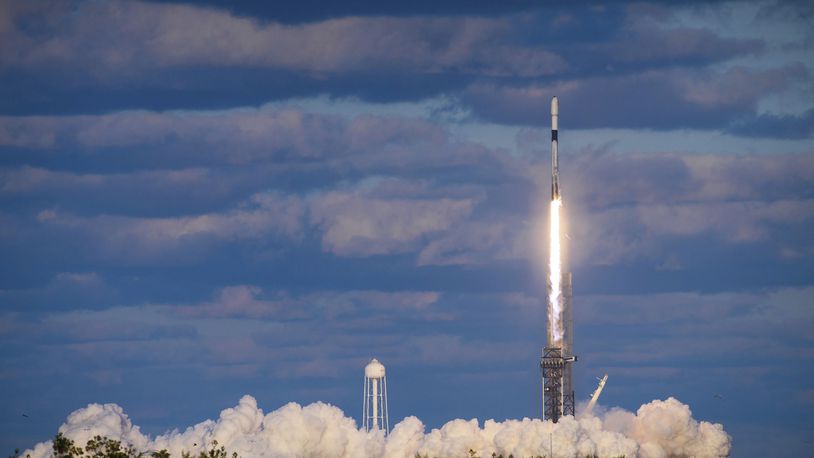South Korea’s second spy satellite was launched from the Kennedy Space Center in Florida on Sunday evening local time, which was Monday morning in Seoul.
South Korea’s Defense Ministry said it confirmed the satellite entered orbit and communicated with an overseas ground station after separation from a rocket.
“With the success of the second military spy satellite launch, our military has acquired an additional independent surveillance ability and further bolstered our ‘kill chain’ capability,” Defense Ministry spokesperson Jeon Ha Gyu told reporters, referring to the military’s preemptive missile strike capability.
Under a contract with SpaceX, South Korea was to launch five spy satellites by 2025. South Korea's first spy satellite launch on Dec. 1 was made from California's Vandenberg Space Force Base.
South Korea in 2022 became the world’s 10th nation to successfully launch a satellite with its own technology by using a homegrown rocket to place what it called a “performance observation satellite” in orbit. But experts say it’s economical to use a SpaceX rocket to launch spy satellite and that South Korea needs more launches to ensure the reliability of a rocket.
North Korea is also eager to acquire its own space-based surveillance network to cope with what it calls military threats posed by the United States and South Korea.
After two launch failures earlier in 2023, North Korea placed its Malligyong-1 spy satellite into orbit on Nov. 21. North Korea has since said its satellite had transmitted imagery with space views of key sites in the U.S. and South Korea, including the White House and the Pentagon. But it hasn’t released any of those satellite photos, and foreign experts doubt whether the North Korean satellite can transmit militarily meaningful imagery.
On March 31, Pak Kyong Su, vice general director of the North's National Aerospace Technology Administration, said North Korea is expected to launch several more reconnaissance satellites this year. During a key political conference in late December, North Korean leader Kim Jong Un vowed to launch three additional military spy satellite in 2024.
South Korean Defense Minister Shin Wonsik said Monday that North Korea will likely go ahead with its second spy satellite launch soon to mark the April 15 birthday of state founder Kim Il Sung, the late grandfather of Kim Jong Un. Shin said it’s still possible for the North to perform the launch later due to technical reasons.
The U.N. bans North Korea from conducting a satellite launch, considering it as a disguised test of its long-range missile technology. The North’s November satellite launch deepened tensions on the Korean Peninsula, with both Koreas taking steps to breach their 2018 agreement to lower down military tensions.
In recent years, North Korea has been engaged in a provocative run of missile tests to modernize and expand its weapons arsenals, prompting the U.S. and South Korea to strengthen their military drills in response. Experts say North Korea likely believes that an enlarged weapons arsenals would increase its leverage in future diplomacy with the U.S.
___
Follow AP's Asia-Pacific coverage at https://apnews.com/hub/asia-pacific
Credit: AP
Credit: AP
Credit: AP
Credit: AP
Credit: AP
Credit: AP
Credit: AP
Credit: AP
